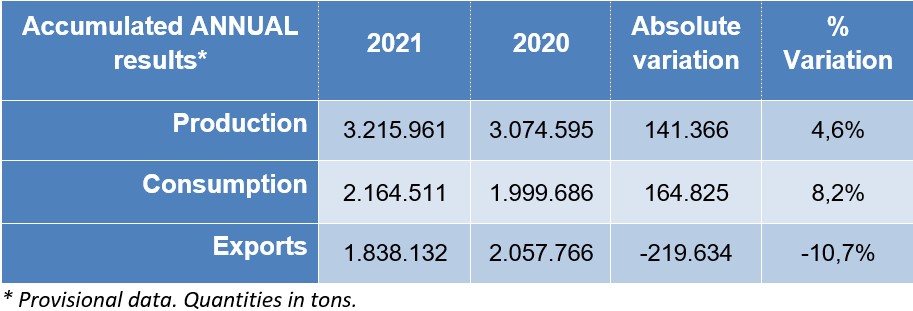The Catalan cement market has closed 2021 with a growth of 8.2% and a total of 2.16 million tons. The recovery, however, does not hide the fact that pre-pandemic levels have not yet been consolidated (2.23 million tons in 2019), and places per capita consumption in Catalonia (280 kg per inhabitant) 26% below the average of the European Union (377 kg per inhabitant). The statistics of Catalonia contrast with those of the rest of the Spanish state, where the level of pre-pandemic cement consumption has recovered and, in fact, the best figure of the last decade has been reached. This reflects the state’s investment deficit in Catalonia compared to the other Autonomous Communities, and the low level of investment in infrastructure by the Government of Catalonia in the last 10 years.Exports have fallen by 10.7% in 2021 with a total of 1.84 million tons, the lowest figure since 2013. The competitiveness of Catalan factories in foreign markets has been greatly weakened by the extraordinary increases in the price of electricity and CO2 emission rights, which have caused a sharp increase in production costs.The Catalan industry expects a slight growth in sales in 2022, mainly motivated by the acceleration of public works tenders due to the progressive aging infrastructures. The president of the Ciment Català employers’ association, Salvador Fernández Capo, also considers that “the digitization of the economy and the ecological transition that will drive the investments of the Next Generation European Funds open up a window of opportunities for our sector”. In this regard, it recalls that the implementation of the Catalan cement industry roadmap towards climate neutrality in 2050 will entail the adoption of Circular Economy policies “which Public Administrations should encourage by facilitating the availability of waste for recovery material and energy in cement factories and discouraging the use of landfills as a solution to the problem of managing the large amount of waste generated by our society”.

